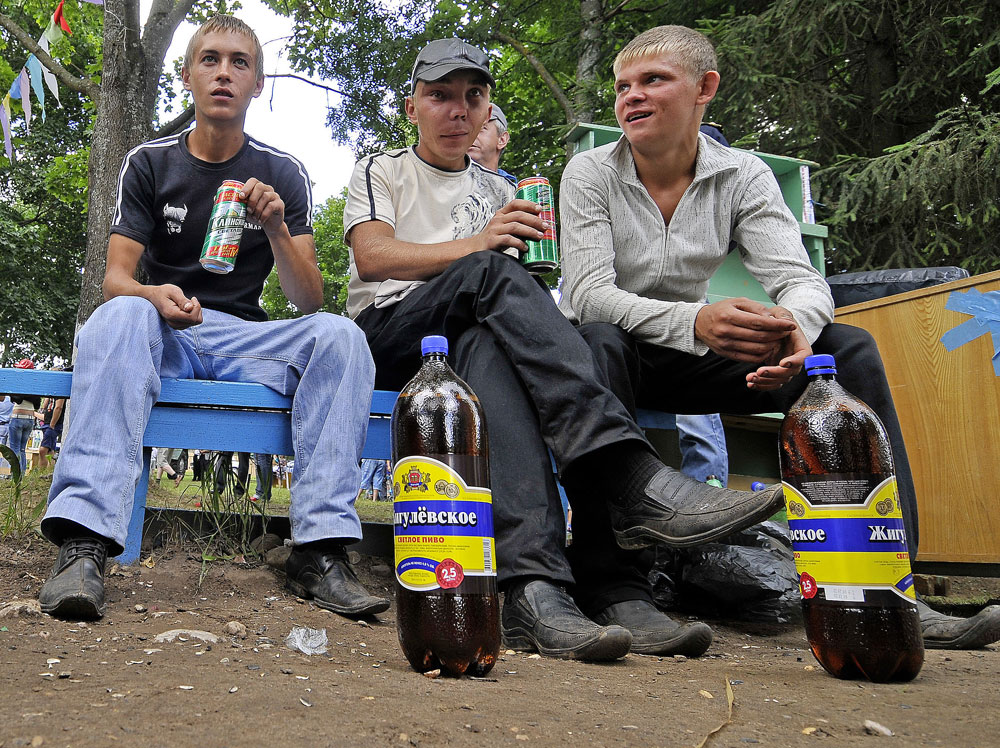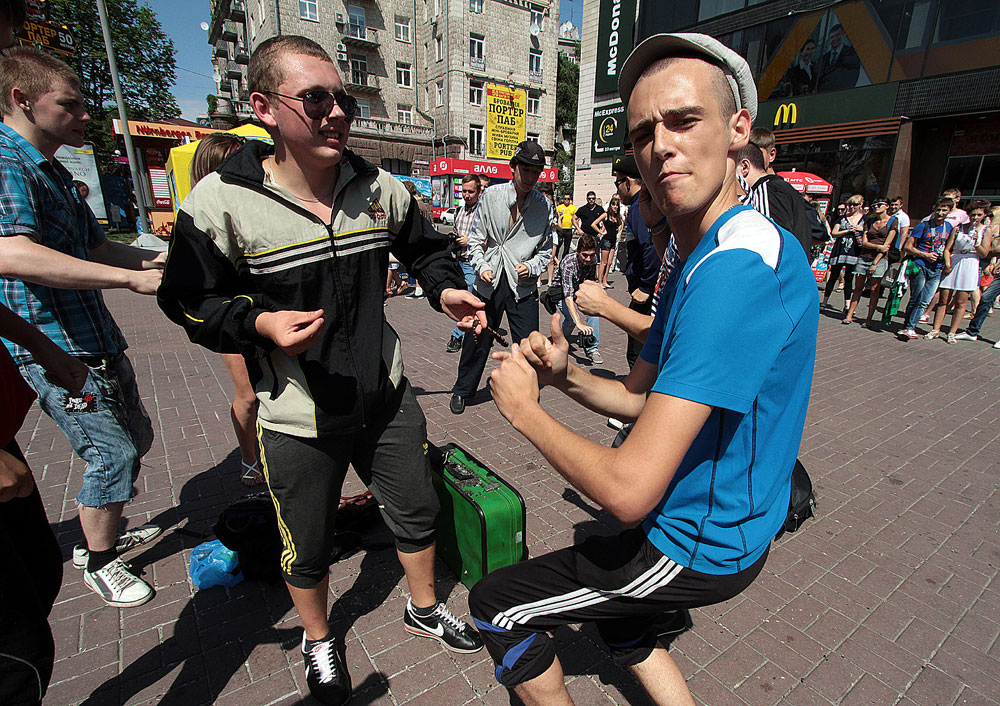Who are Russia’s ‘gopniks’?

The heyday of the gopniks came in the 1990s. Source: http://slavsquat.com
Vitaly Kulagin, a student, was returning home late one evening through the narrow streets of the Ochakovo-Matveyevskoye district to the west of Moscow when, suddenly, he saw three people coming toward him.
Turning around, he saw that two more people were approaching him from behind. He was surrounded by five grim-looking young men; they looked no older than 25 and smelt strongly of alcohol.
“What? Where you going in such a rush, mate?” asked the largest nasally.
“I’m in a hurry,” answered Kulagin.
“You in a hurry now?” the man answered with a grin, producing a knife from his pocket.
Kulagin cannot explain the logic of his next action.
“Yes I’m in a hurry,” he said, and then proceeded to push the man with the knife out of the way and walk on, expecting them to pounce on him. However, the attackers stayed still, perhaps too stunned by his move, and just stood there.
Kulagin was lucky. When asked who threatened him with a knife, Kulagin answered “Gopniky, as usual,” treating these aggressors as petty criminals of the night on the outskirts of Russian cities.
Robbery by civil code
As a rule, poorly educated young people without any special interests or prospects in life become “gopniks.” One of their favourite pastimes is to find victims in the evening or at night and, by strength of numbers, take away their money, phones and other valuables.
 Source: Mikhail Mordasov / TASS
Source: Mikhail Mordasov / TASS
The heyday of the ‘gopniks’ was in the 1990s. In many respects today, they still copy their behaviour from the ‘Bratki’, or the influential gang leaders of that period who lived by “concepts” (a criminal code of honour). For example, before proceeding to rob a person, a ‘gopnik’ must catch the victim in accordance with the ‘code’ or ‘concepts’.
So, to begin, there are provocative questions, such as “Fancy a smoke?” “Where are you from?” And the most difficult one to answer; “You what?”
A correct answer to these questions does not exist in principle. Even if you happen to know someone from the local “authorities” (the bigger local criminal fish) they are still likely to take any money you have anyway. Sometimes, as in Kulagin’s case, a ‘gopnik’ chooses not to enter into a conflict, but this is not the same for everybody.
They’ve got the look
The classic dress code of the ‘gopnik’, created in the 1990s, is a tracksuit (sometimes in combination with leather shoes), a black jacket and a flat cap. The most successful among them sport a gold or gold-plated chain.
In their spare time, away from harassing people, they “hang out” by squatting, drinking cheap beer and vodka, eating sunflower seeds and swearing at each other.
 Source: PhotoXpress
Source: PhotoXpress
In recent years, the classic image of the gopnik has been ridiculed in numerous movies and TV series, so much so that they have become something of a parody and have lost their former popularity, even in the petty crime world. Now the word “gopnik” in Russian speech often no longer means a young robber, but rather an aggressive person who vents their anger on the weak.
Ancient history
It is unclear exactly when the first ‘gopniks’ appeared, or even when the word used to describe them showed up.
One version states that the first ‘gopnik’ appeared in the Russian Empire when shelters were set up for street children and adolescents involved in robbery and hooliganism; Gosudarstvyenniye Obshchestva Priyuta. Another version states that petty criminals became known as ‘gopniks’ because the expression gop-stop is criminal slang for a street robbery or mugging.
Even before their heyday in the 90s, there was a ‘gopnik’ movement in the Soviet Union. Young men from working class areas rebelled against neformaly (non-conformists) and gladly fought people from punk movements, rappers and other lovers of Western music who became popular in the Soviet Union in the 1980s.
Just normal kids
Throughout their history, ‘gopniks’ have been opposed to everything out of the ordinary and new and have seen themselves as “normal lads.”
Sociologist Vera Gavrilyuk noted that this behavior remains the same to this day. She feels gopniks, who claim to be ordinary citizens, are nothing but illiterate and somewhat antisocial members of the public.
“The concept of their worldview is to refuse all cultural values such as education, tolerance, labor, and aspirations for self-improvement,” she said.
All rights reserved by Rossiyskaya Gazeta.
Subscribe
to our newsletter!
Get the week's best stories straight to your inbox